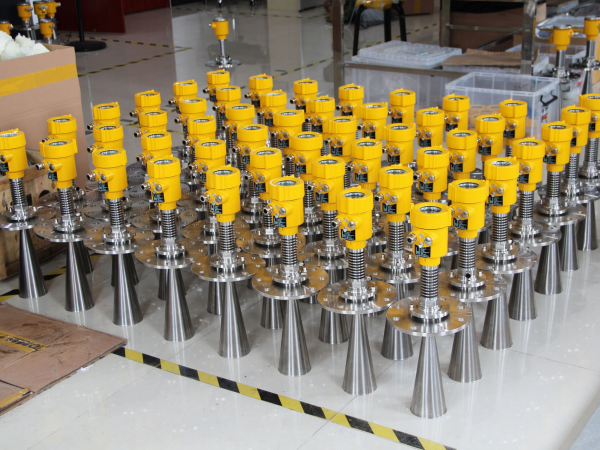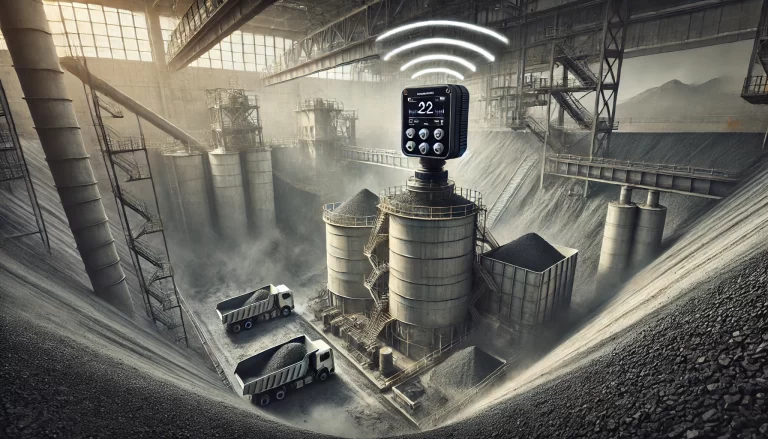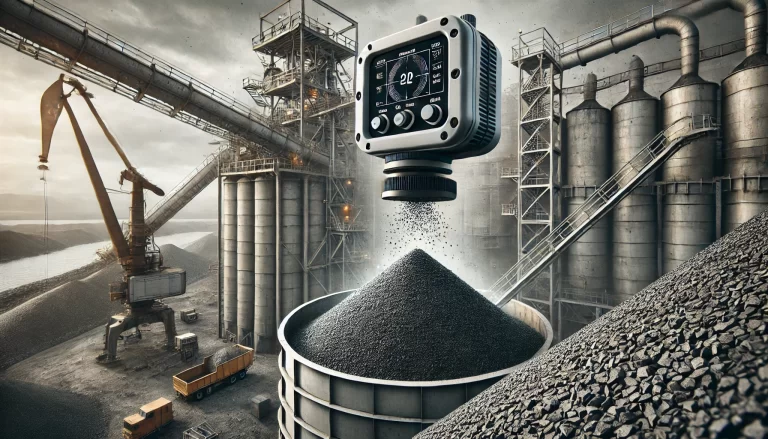Solid fuel storage facilities, such as those used for coal, minerals, and other raw materials, play a crucial role in industrial production. However, due to the complex and dynamic nature of these materials, traditional measurement methods often struggle to provide accurate results. Radar level transmitters, with their non-contact design and high precision, offer an excellent solution for these measurement challenges.

Principle and Functionality of Radar Level Transmitters
Radar level transmitters operate based on the principle of electromagnetic wave reflection. By emitting and receiving microwave signals, they can accurately detect the surface level of materials. Compared to mechanical or optical measurement devices, radar transmitters are unaffected by environmental conditions such as temperature, humidity, and dust. This stability makes them reliable even in harsh working environments.
The non-contact nature of radar measurement ensures there is no interference with the stored materials, and it guarantees continuous and precise data acquisition. These transmitters excel in solid fuel storage applications, offering several unique advantages:
- Versatile adaptability: They perform well in silos and narrow spaces of various shapes and sizes.
- Advanced algorithms: Radar transmitters can filter out interference signals, accurately detecting the actual material level despite irregular material piles.
- Remote monitoring and intelligent diagnostics: Modern radar transmitters feature remote monitoring capabilities and intelligent diagnostics, improving maintenance efficiency and reducing operational costs.

How Radar Level Transmitters Work
The operational mechanism of these devices is based on sophisticated scientific principles. When radar waves encounter an interface with different dielectric constants, part of the energy is reflected back, while the rest penetrates the interface and continues to propagate. The distance to the material surface is determined by calculating the time difference between the emitted wave and the reflected wave. Although this process may seem straightforward, it involves complex physical laws and precise calculation models, ensuring reliable measurement results under diverse conditions.
Practical Benefits in Industrial Applications
In real-world applications, radar level transmitters have demonstrated impressive performance. For example, in a large power plant’s coal storage system, inaccurate measurements in the past led to frequent issues of excess or insufficient coal supply, affecting power generation efficiency and even causing downtime. Since the adoption of radar level transmitters, these challenges have been resolved. The improved measurement accuracy and strong environmental adaptability have minimized maintenance needs. Moreover, real-time monitoring and analysis of material levels have enabled the power plant to manage coal procurement and consumption more precisely, achieving both cost savings and production optimization.

Conclusion
The application of radar level transmitters in solid fuel storage exemplifies the progress of industrial automation and highlights how technological advancements drive industry upgrades. With their distinct advantages, these transmitters overcome the limitations of traditional measurement methods, providing robust support for the safe and efficient operation of industrial production.
